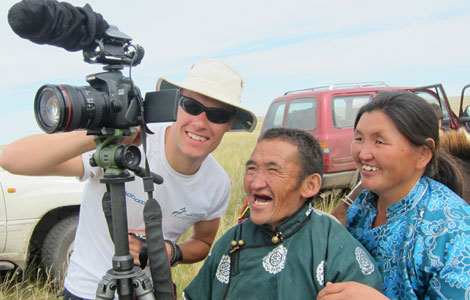No evidence of H7N9 transmission between humans: WHO
Updated: 2013-04-23 08:11
By Wang Hongyi in Shanghai (China Daily)
|
||||||||
There is no evidence of sustained human-to-human transmission of the H7N9 virus despite small clusters of cases, World Health Organization officials said on Monday after a two-day visit to Shanghai.
China had reported a total of 105 cases by Monday. East China's Shandong province reported its first case on Monday, and two new cases were also reported in eastern Zhejiang province, according to provincial disease control departments.
"Whenever we find a virus in animals, people become worried about whether it can be transmitted to humans. That's why domestic and international experts now pay great attention to the new strain of H7N9 bird flu," Keiji Fukuda, assistant director-general for health security and environment of the World Health Organization, said at a news conference.
"But right now, we do not have evidence that the flu has sustained human-to-human transmission," he said.
Fukuda led a joint team of experts from the WHO and Chinese health authorities to Shanghai, where the flu was first reported.
During the two-day visit, the experts carried out field investigations such as visiting the Shanghai Public Health Center, the Shanghai Center for Disease Control and Prevention, the Sanguantang live poultry market and a local animal disease prevention center. They spoke to local experts to find out how the virus is spreading and how Shanghai responded to it.
"We're quite impressed with the exchanges and discussions with our counterparts in Shanghai. We believe the city has responded to the flu at a high level and is well prepared for the disease," Fukuda said.
Experts do not see the clustered cases in which more than one member of a family becomes infected as instances of human-to-human transmission.
Fukuda said there is no evidence to show the disease can be transmitted between humans, and that procedure involves studying common exposure history to determine a cause of infection.
Among the cluster cases was the husband of a woman who was confirmed with the virus and had died. The 56-year-old man, surnamed Gu, was confirmed to have the virus on April 13.
"My father is still in serious condition and remains hospitalized," said the man's daughter, who did not want to be named. The girl also went to Monday's news conference, hoping to obtain a serum from those who have recovered to help her father.
"An official from the Shanghai CDC told me after the news conference that, currently, the serum cannot be used clinically. I don't know what I am going to do to save my father," she told China Daily.
Experts said the main source of the virus is the live poultry market.
"To date, Shanghai has collected more than 15,000 samples for testing. The Ministry of Agriculture found three positive samples among them, from a wholesale market and two agricultural trading markets," said Liu Peihong, director of the Shanghai Animal Disease Prevention Center.
Wu Fan, director of the Shanghai Center for Disease Control and Prevention, denied a rumor that 50 percent of confirmed H7N9 cases had not had contact with live poultry.
"Our investigation showed that only two cases didn't have direct or indirect contact with live poultry," she said. "That is to say, most of these cases have had contact with live poultry."
Over the past 10 days, the number of H7N9 bird flu cases in Shanghai has decreased significantly. The current cases were all confirmed before April 13, according to Xu Jianguang, director of the Shanghai Health and Family Planning Commission.
By 5 pm on Monday, the city had detected 33 H7N9 cases with 12 fatalities.
Official said the next step is to strengthen the medical surveillance of the bird flu virus, which is critical to control its spread.
"The virus has been changing and might be mutating. We should pay close attention to its changes," Fukuda from the WHO said.
wanghongyi@chinadaily.com.cn
(China Daily 04/23/2013 page7)

 Obama celebrates young inventors at science fair
Obama celebrates young inventors at science fair
 Earth Day marked around the world
Earth Day marked around the world
 Volunteer team helping students find sense of normalcy
Volunteer team helping students find sense of normalcy
 Ethnic groups quick to join rescue efforts
Ethnic groups quick to join rescue efforts
 Earthquake leaves family shattered
Earthquake leaves family shattered
 Boston Marathon bombing suspect charged
Boston Marathon bombing suspect charged
 Chasing vestiges of the Great Wall
Chasing vestiges of the Great Wall
 Weekly Photos: April 15-21
Weekly Photos: April 15-21
Most Viewed
Editor's Picks

|

|

|

|

|

|
Today's Top News
Russia criticizes US reports on human rights
China 'aims to share its dream with world'
Chinese president appoints 5 new ambassadors
Nation's IPR suits see spike in 2012
H7N9 not spread between humans: WHO
Health new priority for quake zone
Sino-US shared interests emphasized
China, ROK criticize visits to shrine
US Weekly

|

|






